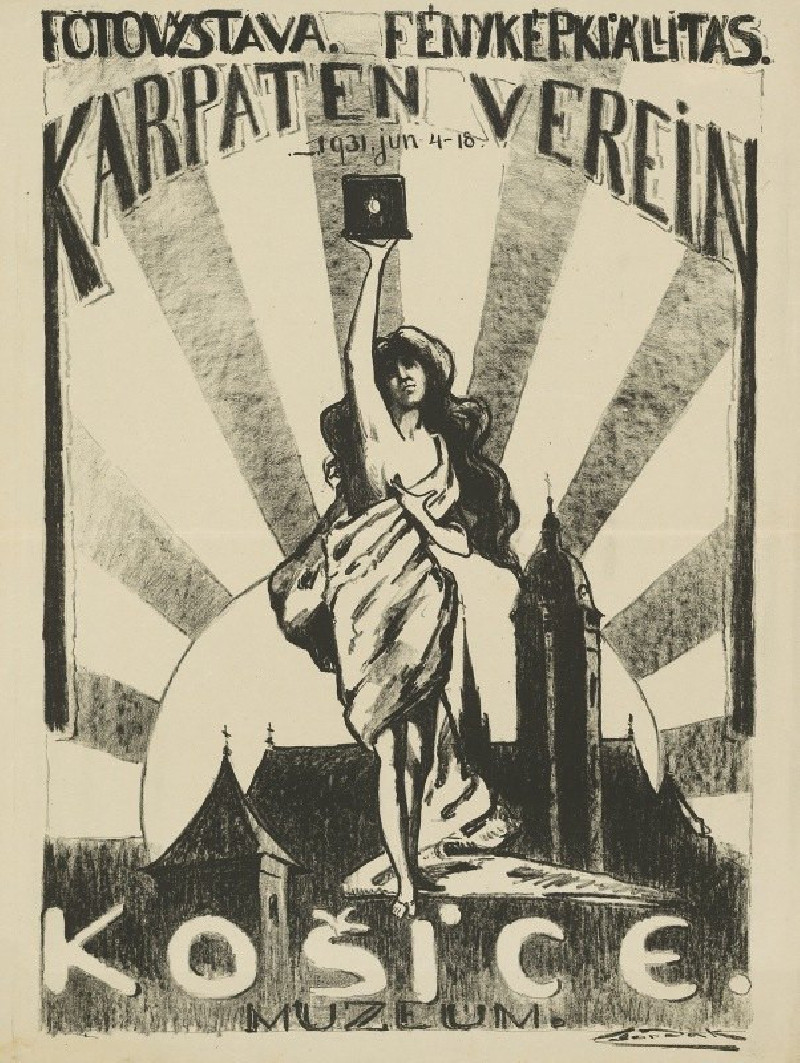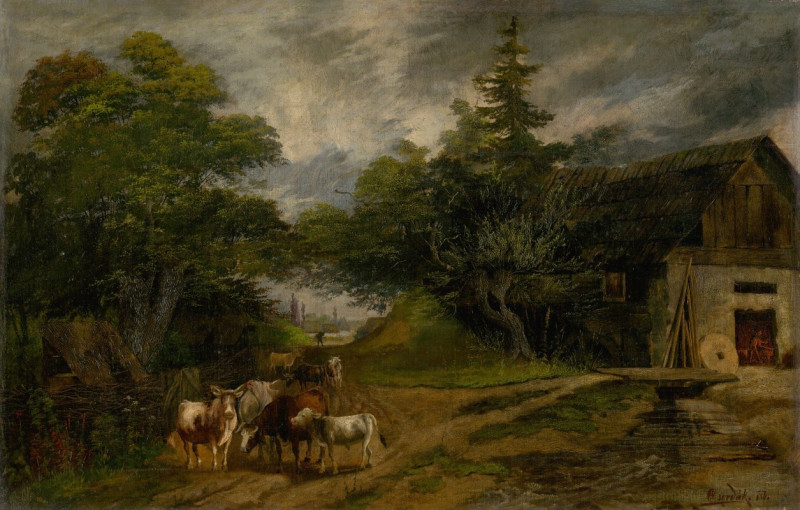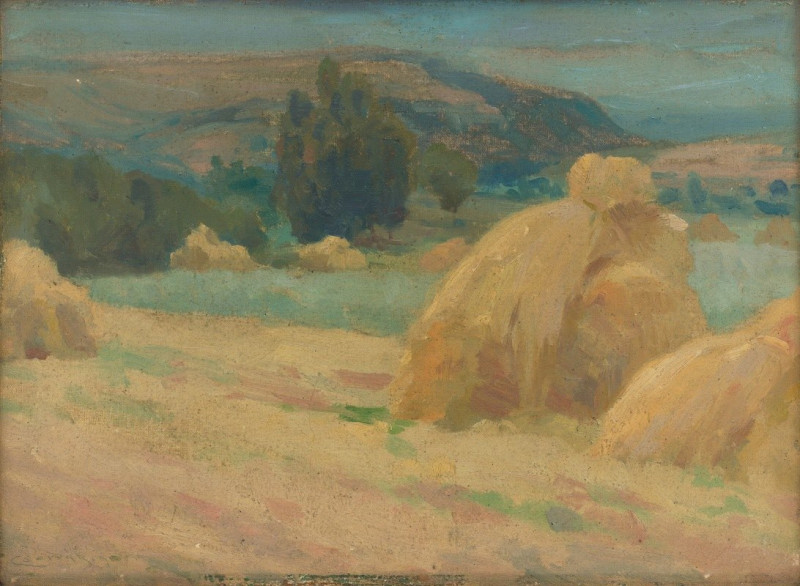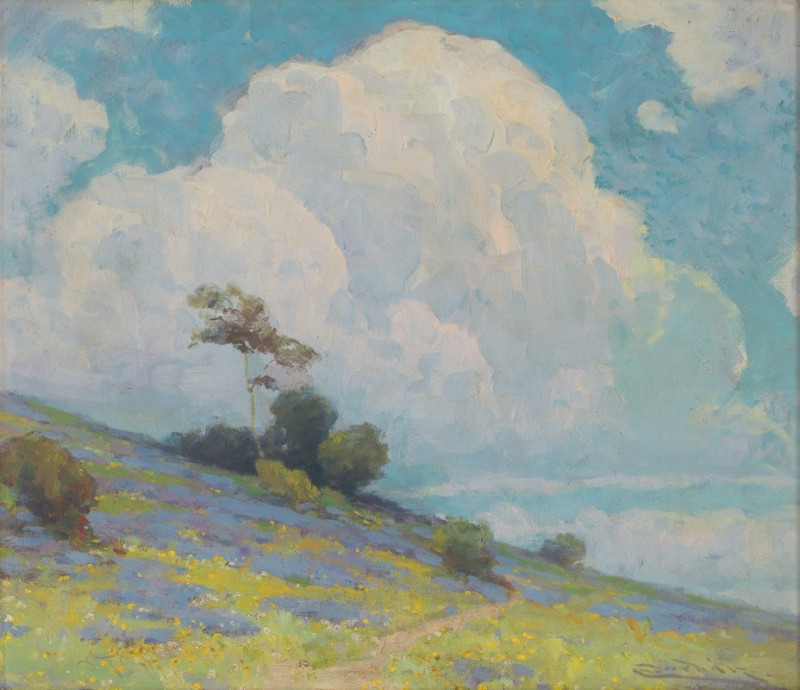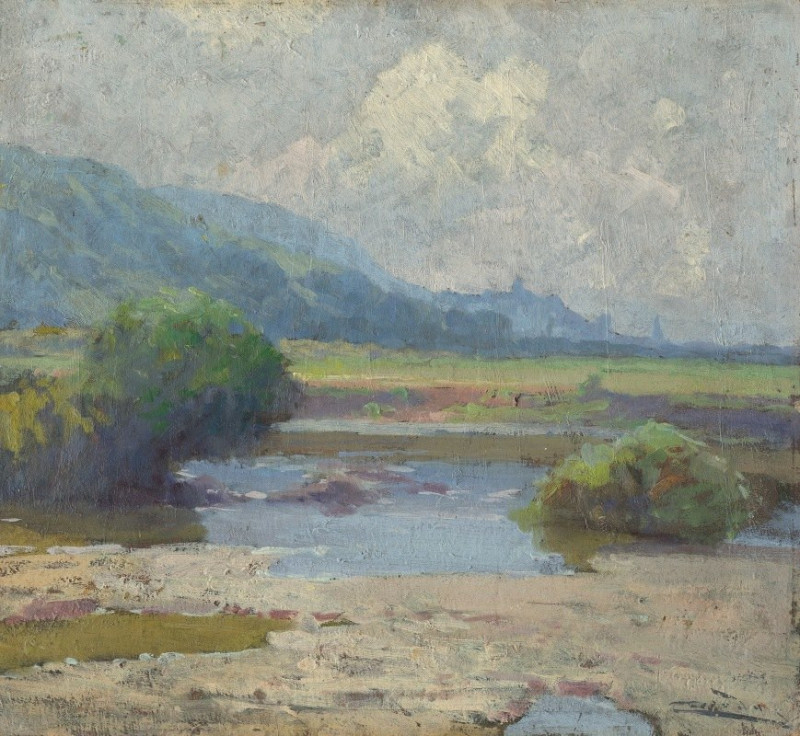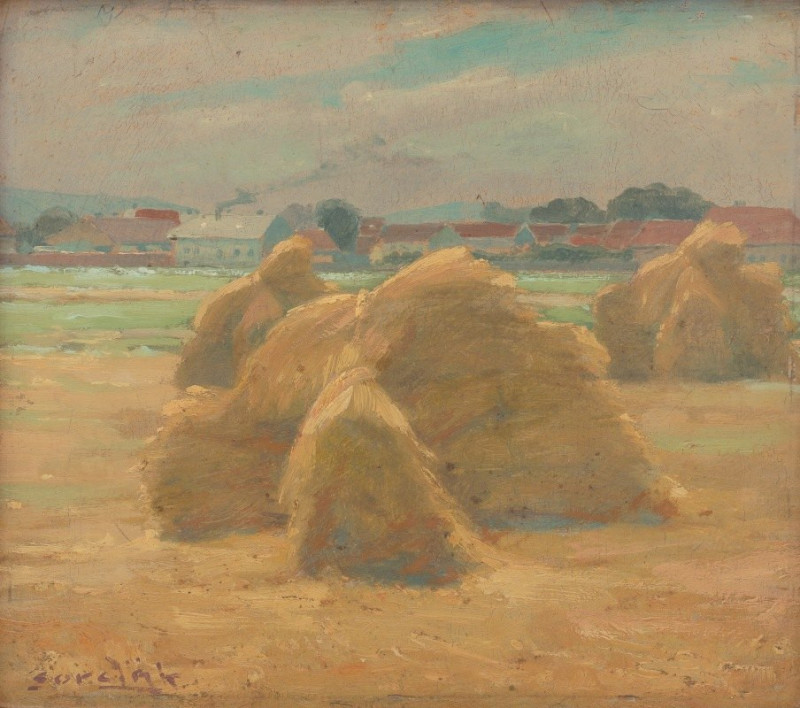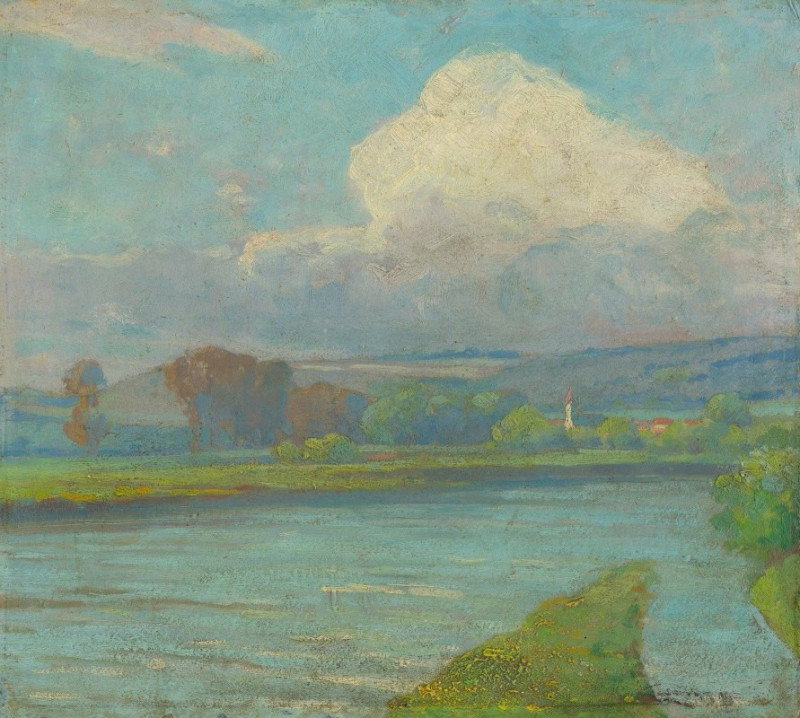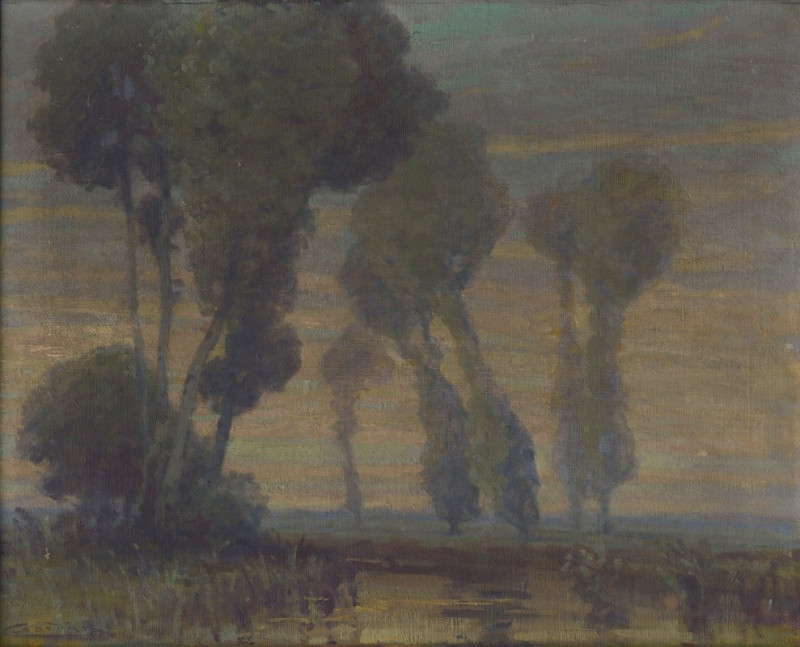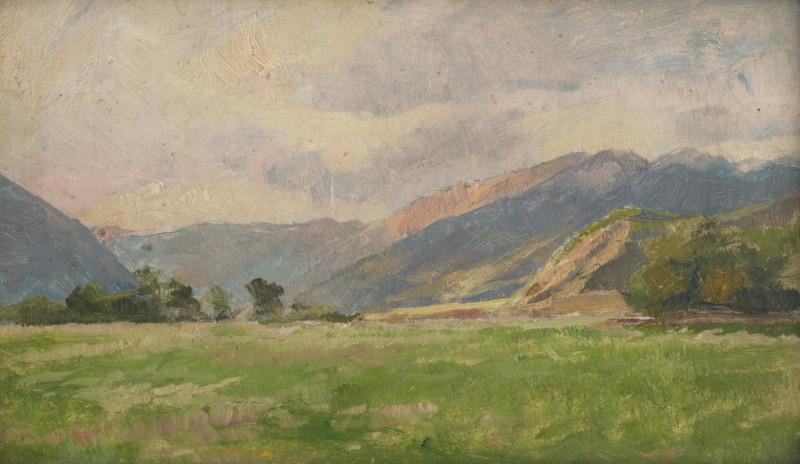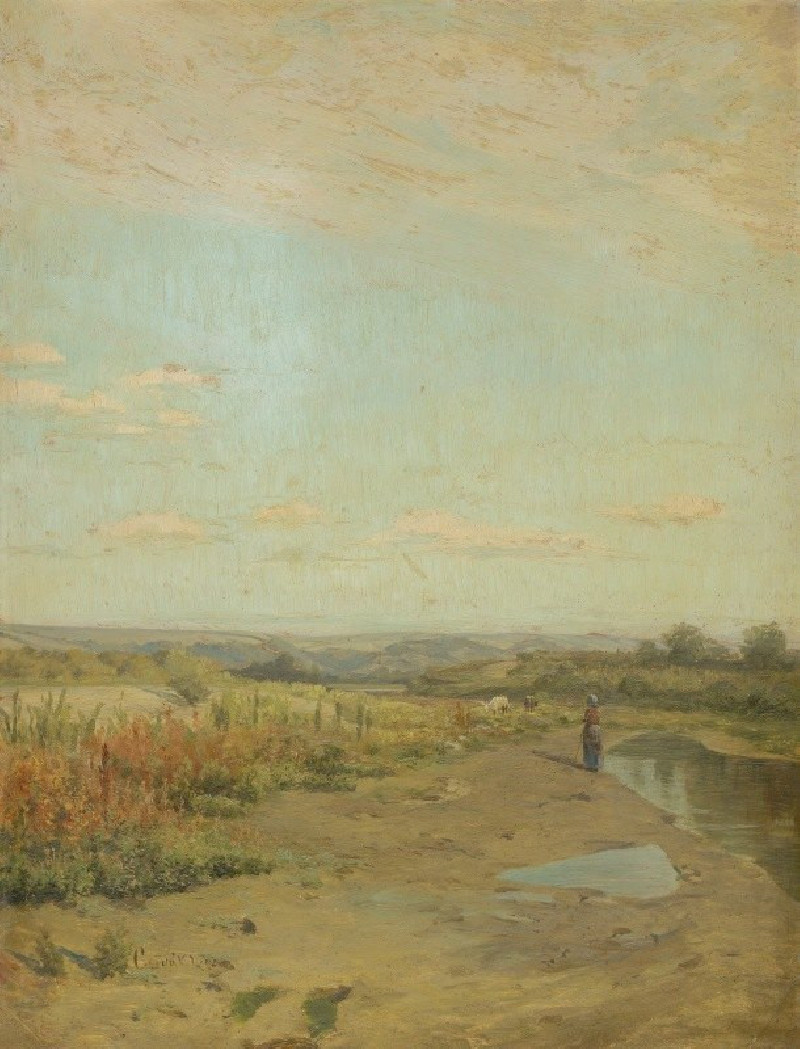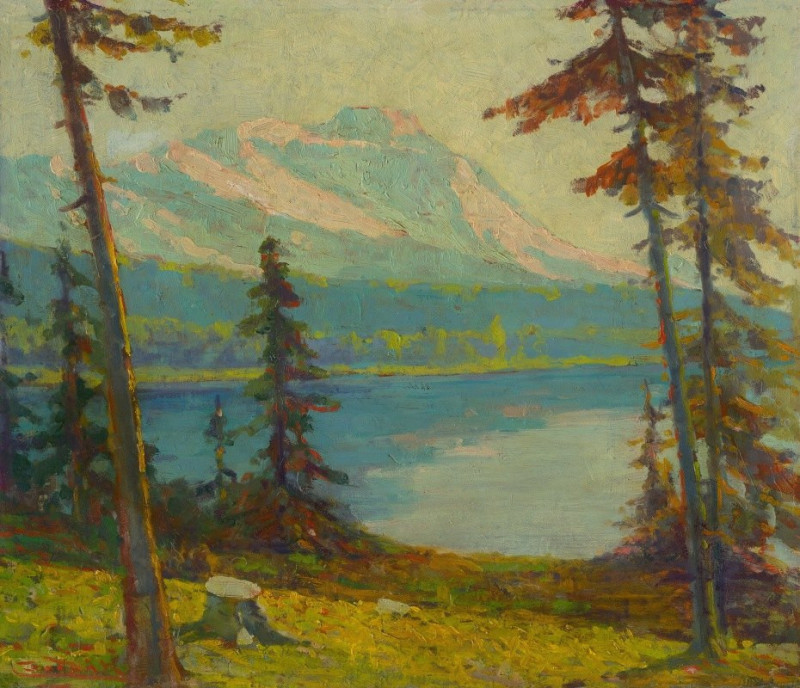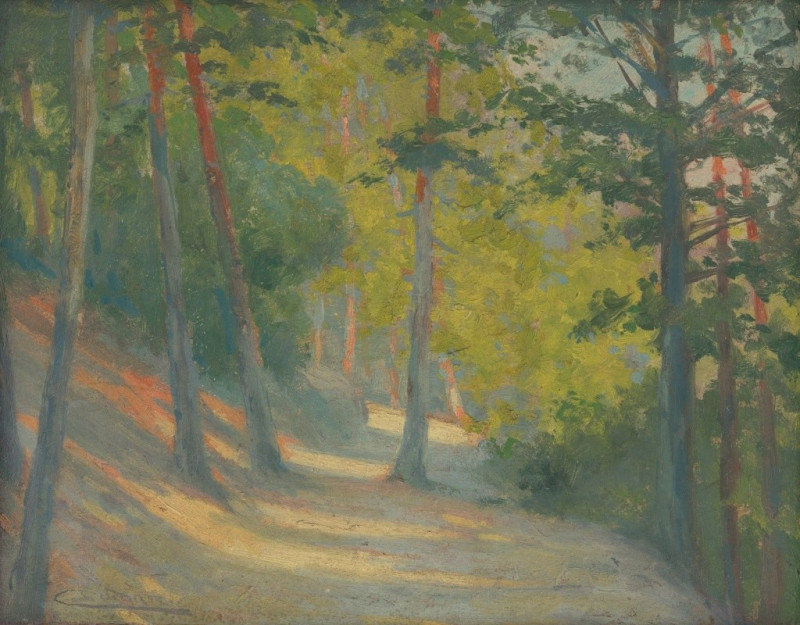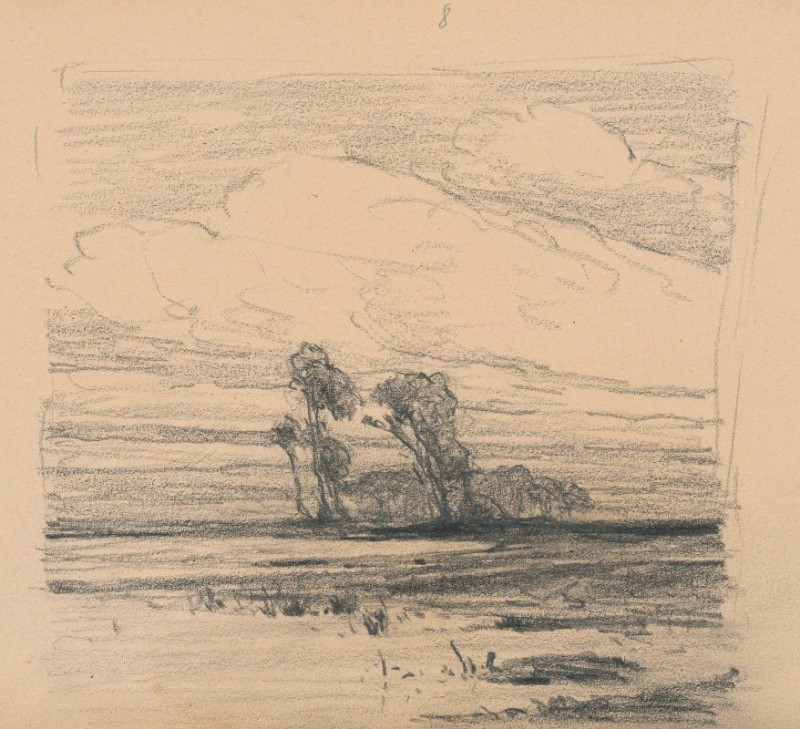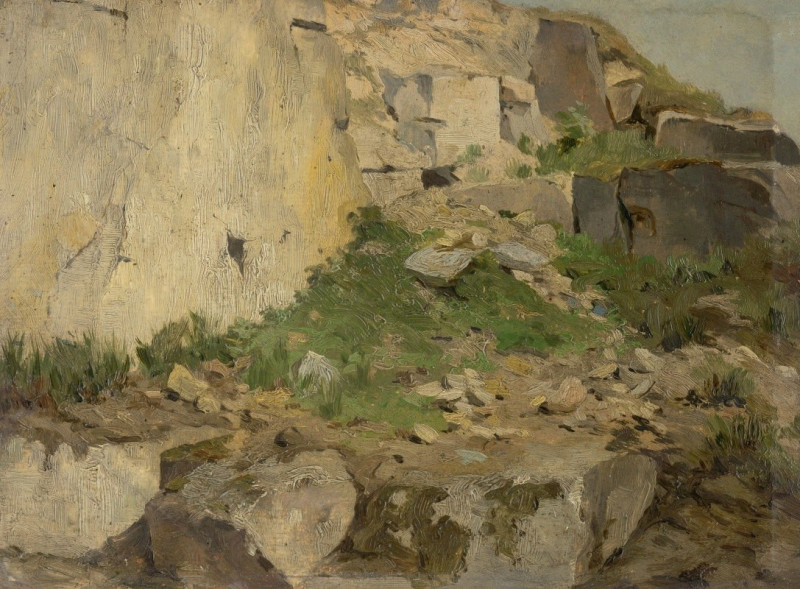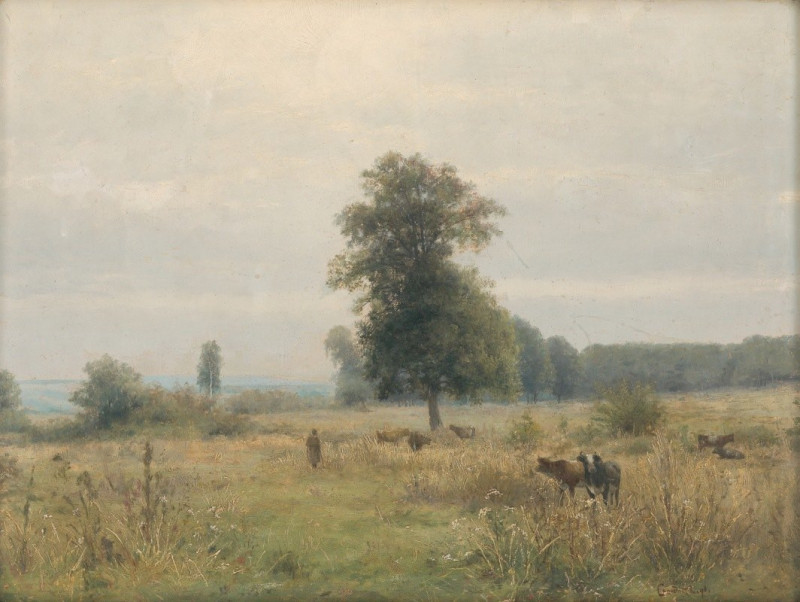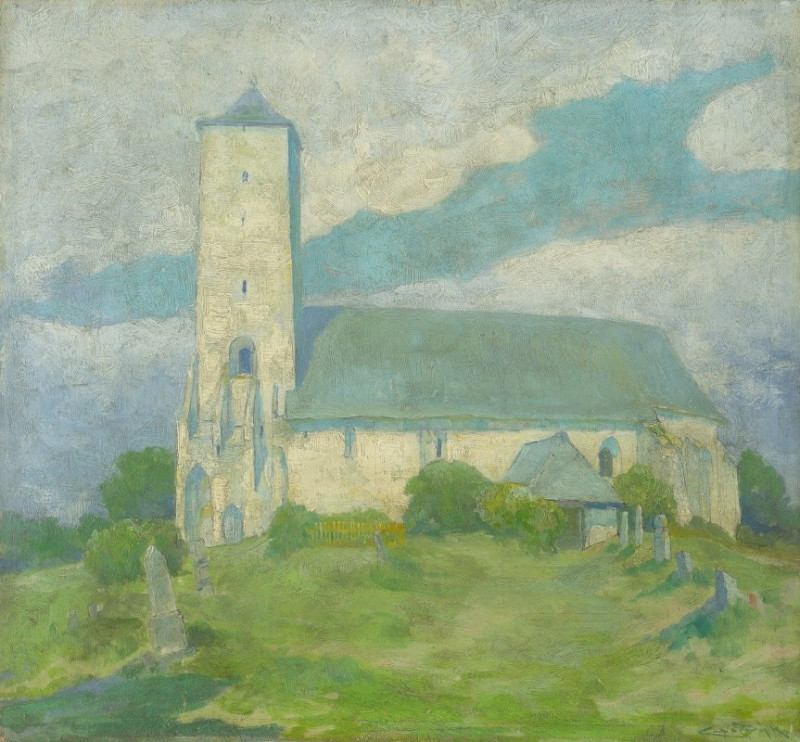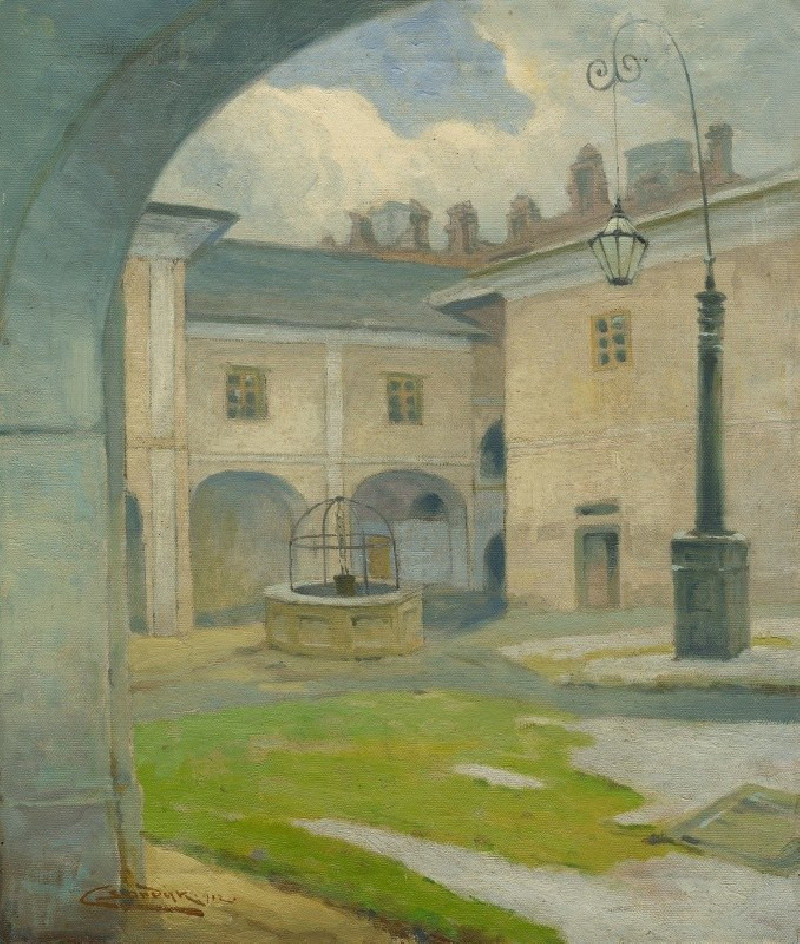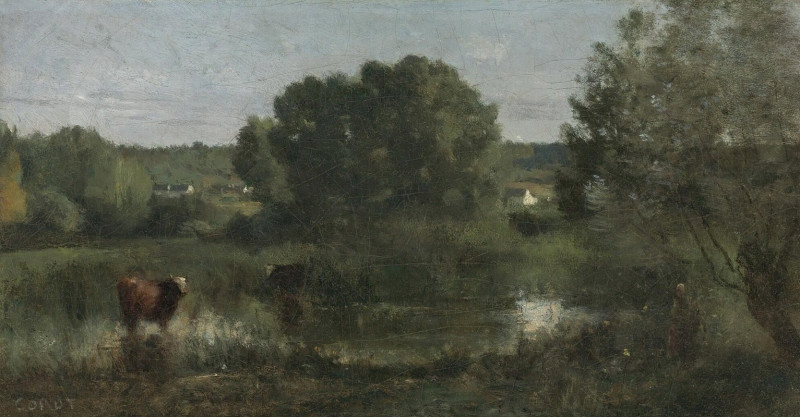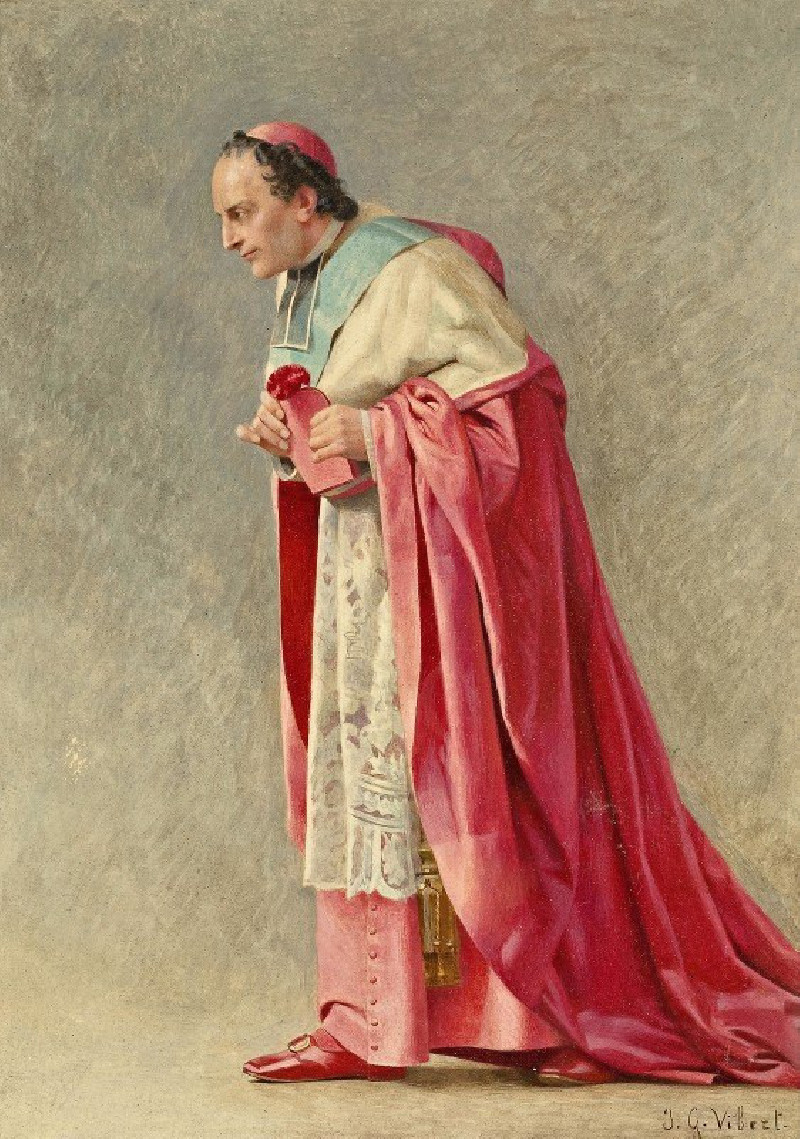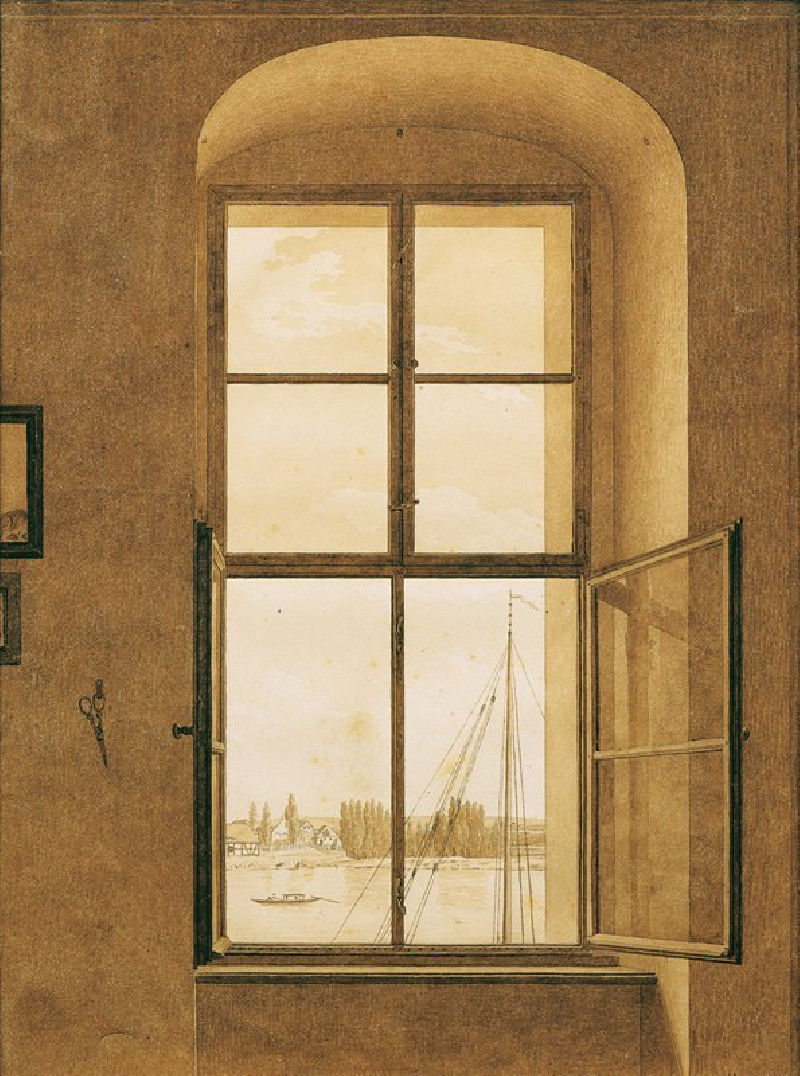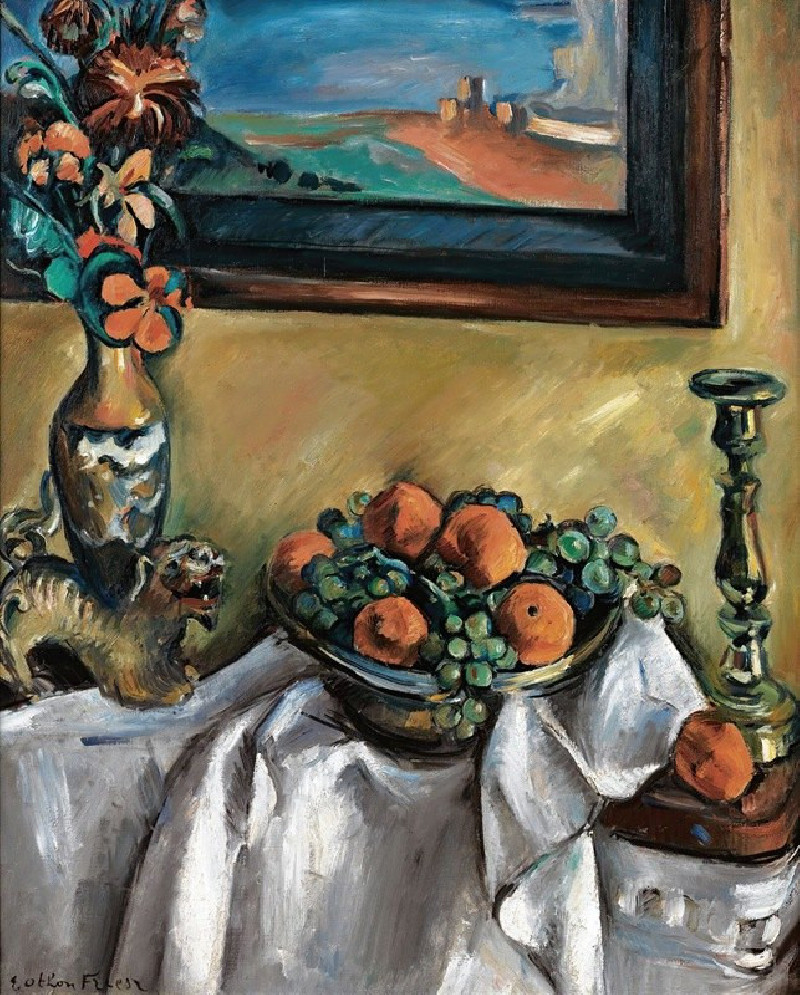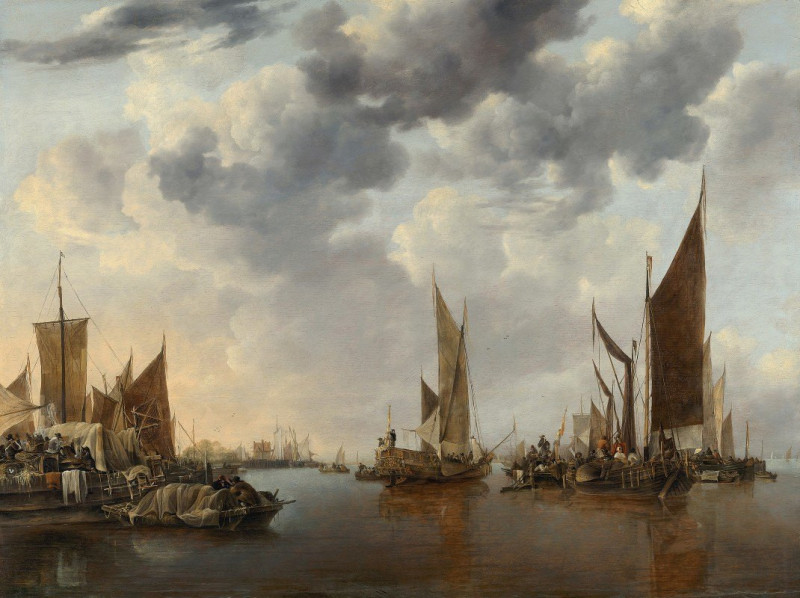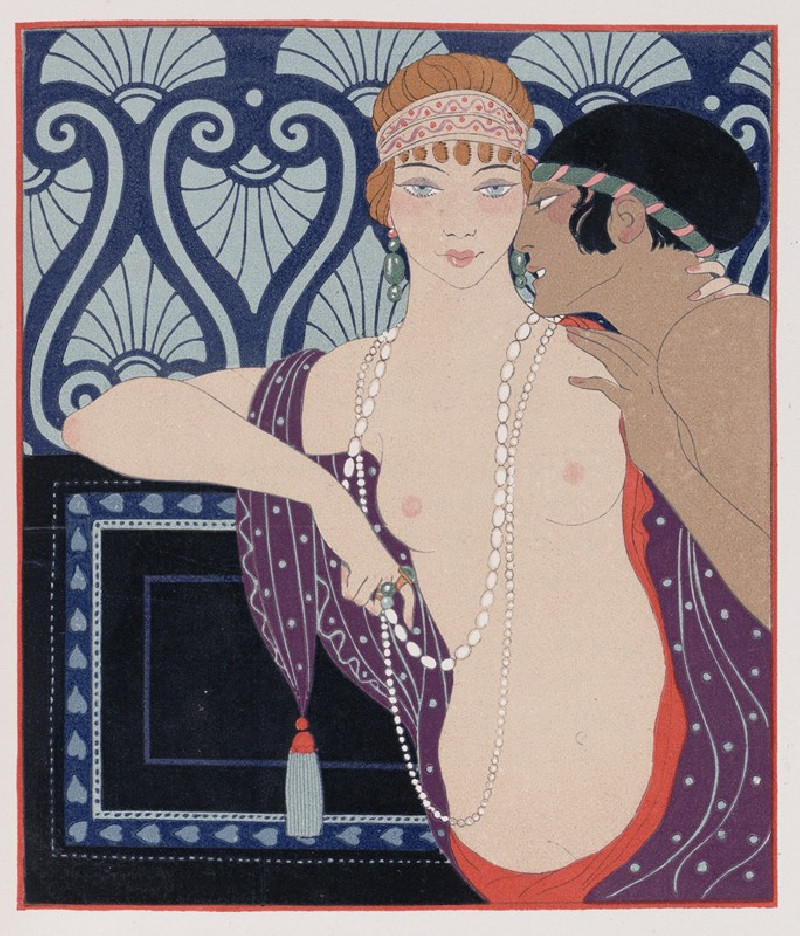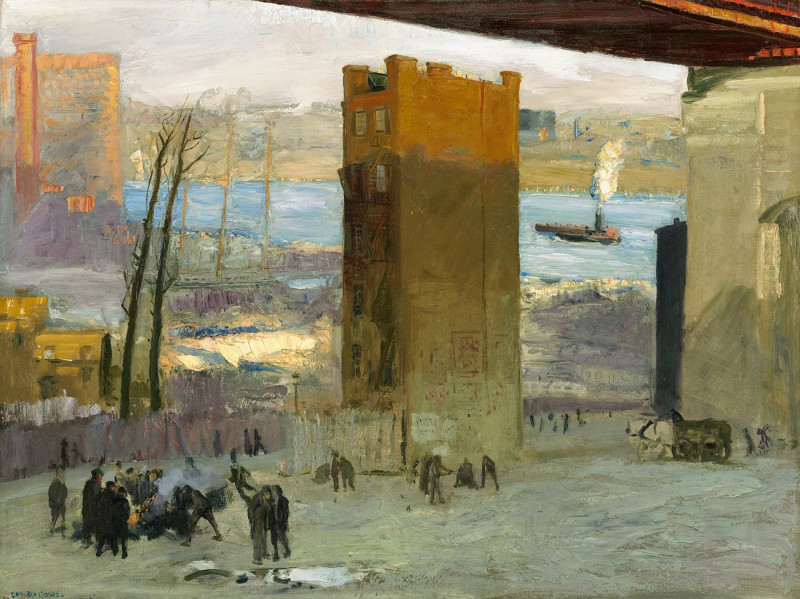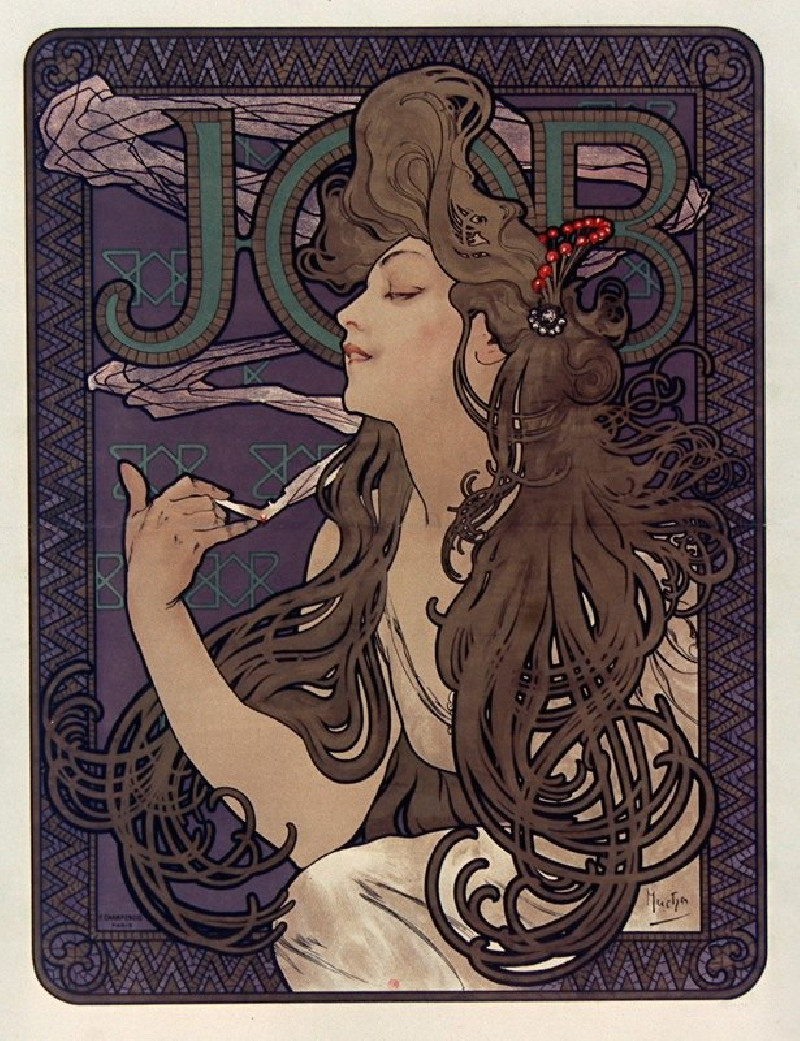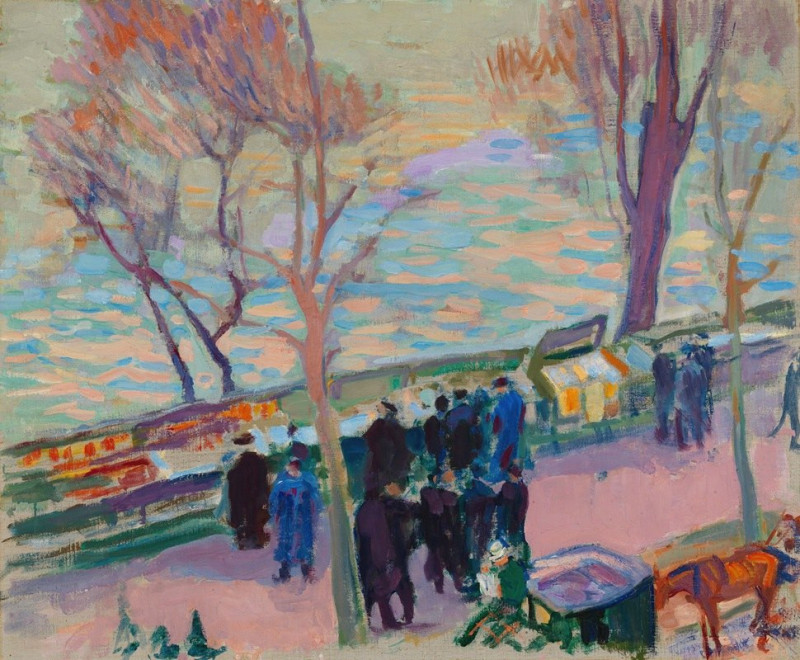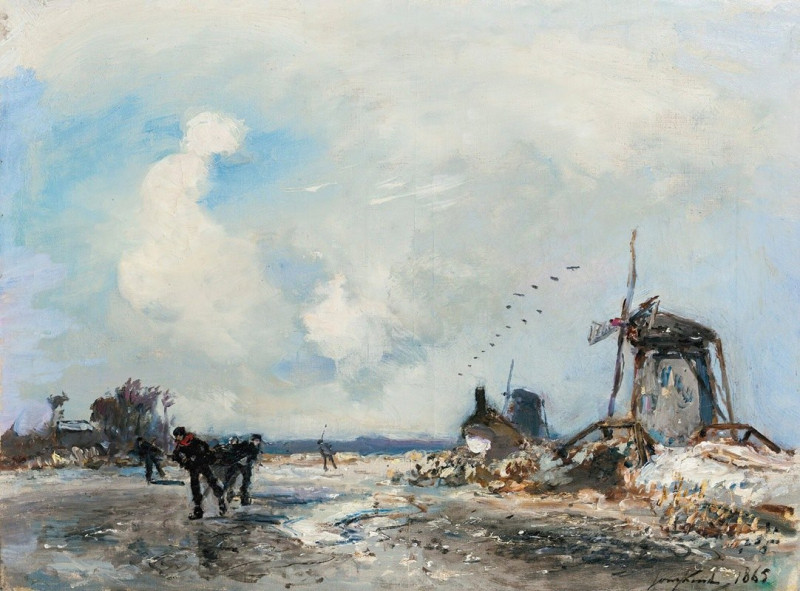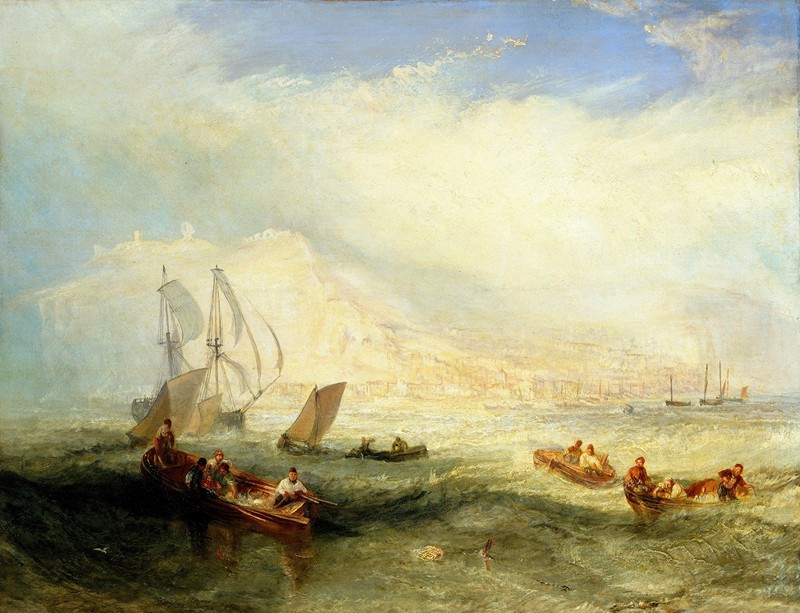Hrčiarska street in Košice (1910–1915)
Technique: Giclée quality print
Recommended by our customers
More about this artwork
This evocative painting by Ľudovít Čordák captures a vibrant and historically rich view of Hrčiarska Street, one of the picturesque locales in Košice, Slovakia. Painted between 1910 and 1915, Čordák's work wonderfully represents the architectural charm and daily rhythm of early 20th-century Košice.The composition showcases a narrow, bustling street, flanked on either side by high, pastel walls that reveal the period architecture with its fading plasters and tall windows. Prominent in the painting is an arched passageway midway down the street, adding a hint of mystery and depth to the scene. Through this archway, a sliver of sky and distant buildings offer perspective and a glimpse into the urban expanse beyond.Pedestrians, possibly locals of the town, are seen walking down the street, captured in various motions, each adding life and a story to the historical moment depicted. Their attire, characterized by early 20th-century fashion, reflects the everyday life and societal norms of the period. Each brushstroke, laden with emotion and precision, paints a vivid image of communal life, where individuals go about their routine amidst the serene, enduring beauty of their surroundings.This painting not only documents a historical moment but also expresses the perennial charm of Košice. As viewers, we are invited to step back in time and walk the cobblestone streets, feel the pulse of the city, and immerse ourselves in the quiet beauty of a moment captured forever by Čordák's masterful hand.
Delivery
Returns
Ludwig Deutsch was an Austrian painter who settled in Paris and became a noted Orientalist artist.
Details of Ludwig Deutsch's life are obscure. He was born in Vienna in 1855 into a well-established Jewish family. His father Ignaz Deutsch was a financier at the Austrian court. He studied at the Vienna Academy of Fine Arts 1872–1875, then, in 1878, moved to Paris where he became strongly associated with Orientalism.


